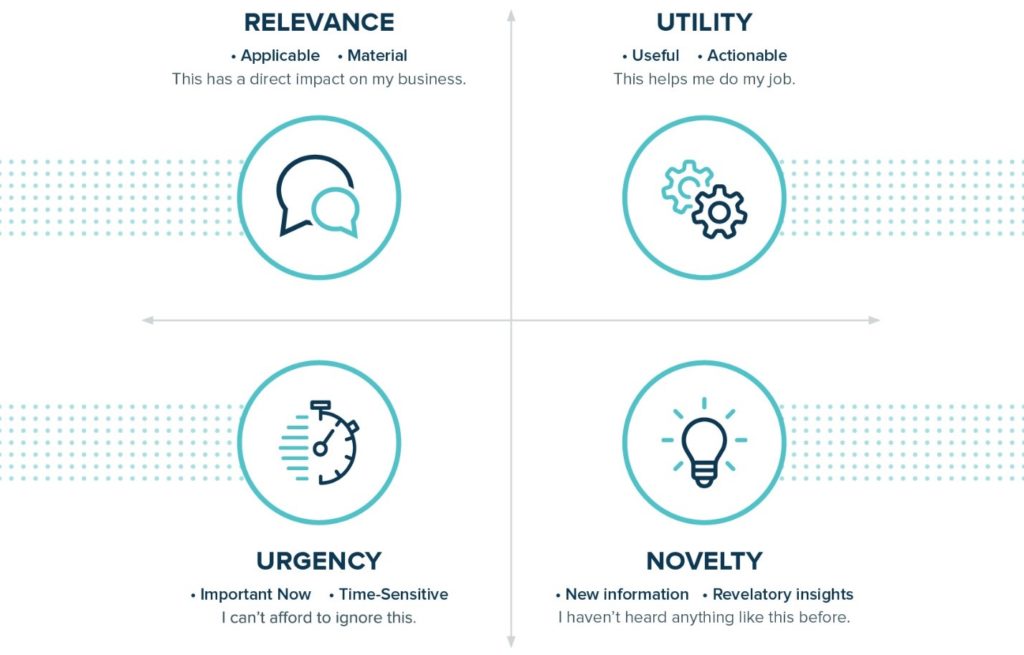July 11, 2019
Beyond the Buzzword: How to Create Actual Thought Leadership

We say “thought leadership” too much in this business. We do it. Our clients do it. The whole industry does it. Last year thought leader even overcame leverage to win the title as the most overused term in PR.
Any term getting tossed around that much is bound to lose its punch and, eventually, its meaning. Thus you’ll find plenty of voices advocating that we stop using the phrase thought leadership altogether.
I’m usually all about eliminating buzzwords – if I could take leverage out back and shoot it, it’d be dead before close of business – but in this case I think there’s a better way: We don’t need to stop saying “thought leadership,” we need to start producing actual thought leadership.
Because the real problem is not the phrase itself, it’s that there are too many people producing too much content and calling it thought leadership. There are a lot of reasons for that, of course. Publishing is cheap and easy. Marketers have thought leadership fever. There’s too much focus on quantity. Lots of would-be thought leaders don’t know what real thought leadership is or how to produce it.
That last problem is the hardest to solve, and one we encounter a lot. Our clients are incredibly smart, accomplished professionals, many of whom counsel the world’s most sophisticated businesses. They clearly have a lot to say.
But would-be thought leaders too often get hung up on what they want to say, without stopping to consider what their audience wants to hear. Or they get lost in the forest of their expertise and wind up with content that amounts to, as one legal marketer recently described it to us, “nerds talking to nerds about nerdy things.”
Most of the time our key audiences – the people in the C-suite, typically – are not among those nerds. So nerdy content has almost no chance of engaging them or reeling in new business for our clients.
When that happens it’s at least partly our fault. Our job is not just to take notes and churn out content based on whatever comes out of an SME’s mouth, it’s also to educate them about what thought leadership means and on what actual thought leadership looks like.
To help us do that, we created a framework that breaks it down into four attributes. Here it is.

We didn’t just pull these four categories out of thin air. We chose them based on our experience and knowledge of what works and what doesn’t – and on our data. This year’s State of Digital and Content Marketing Report – coming in July – cements our belief that these characteristics make content far more likely to engage executive readers. Let’s look at each of them.
Relevance – Obvious, right? If it’s not relevant, why would anybody read it? Not surprisingly, our survey of in-house counsel and C-suite officers reveals that relevance ranks among the top three attributes those executives look for in articles, newsletters, podcasts and in-person events – in other words, all the content professional services firms produce most.
Novelty – When I was a writer at Forbes, I lived in mortal fear of discovering that a story I was working on had already been written by somebody at the Wall Street Journal or Business Week. If it had, and my editor found out, there would’ve been hell to pay. We all understood that if we weren’t giving our readers something new, something they couldn’t get anywhere else, there would be no reason for them to read the magazine. The same holds true in the thought leadership game: If you’re not saying something new, how can it be thought leadership?
Urgency – How many times do you bookmark something or otherwise set it aside to read later – and then never read it at all. Content that’s not important now is far less likely to win the battle for an executive’s attention. For the second year in a row both the C-suite and the GCs tell us they value content that’s current over all but one other attribute….
Utility – Both C-level and GC audiences say utility is by far the quality that attracts them most to the content they consume. These are busy people in a hyper-competitive world, so it makes sense that when they decide to read, watch, listen to or attend something, they’re not doing it just to tickle their curiosity. They’re looking for insights that will help them do their jobs better.
We also believe that utility is the quality that’s most likely to move a reader closer to a purchasing decision. Content that’s just interesting or informative might make a good impression. But if it tells them what they need to do, they’re far more likely to reach for the phone, to call the author and say “I need you to help me do that.”
And that, at the end of the day, is why we’re producing thought leadership in the first place.
A version of this article appears in Greentarget’s 2019 State of Digital and Content Marketing Survey; that report will be published in July.









